Abstract
1. Prostanoid receptors have been characterized in a range of guinea-pig and rat smooth muscle and platelets, according to the scheme of Coleman et al., (1985a), using agonists (prostaglandin D2 (PGD2), PGE1, PGE2, 16,16 dimethyl PGE2, PGF2 alpha, PGI2 and U46619) and putative selective antagonists (AH 6809 and SQ 29,548). 2. The ileum possesses EP1- and IP-receptors; the trachea, EP1-EP2- and TP-receptors; the oesophageal muscularis mucosa, EP1- and TP-receptors; the aorta and the portal vein TP-receptors. The rat colon possesses IP-, FP- and TP-receptors. 3. Guinea-pig platelets possess both IP and DP receptors mediating an inhibition of aggregation and TP receptors mediating proaggregation responses. No evidence was found for the presence of EP1-, EP2- or FP-receptors. 4. Misoprostol and fenprostalene were characterized using the above preparations. Misoprostol acts as a selective EP1-agonist, and has little or no DP, FP, IP and TP activity. In the trachea precontracted with carbachol no evidence of EP2-receptor stimulation was observed. Fenprostalene possesses FP and TP activity but no EP1, EP2, DP or IP activity.
Full text
PDF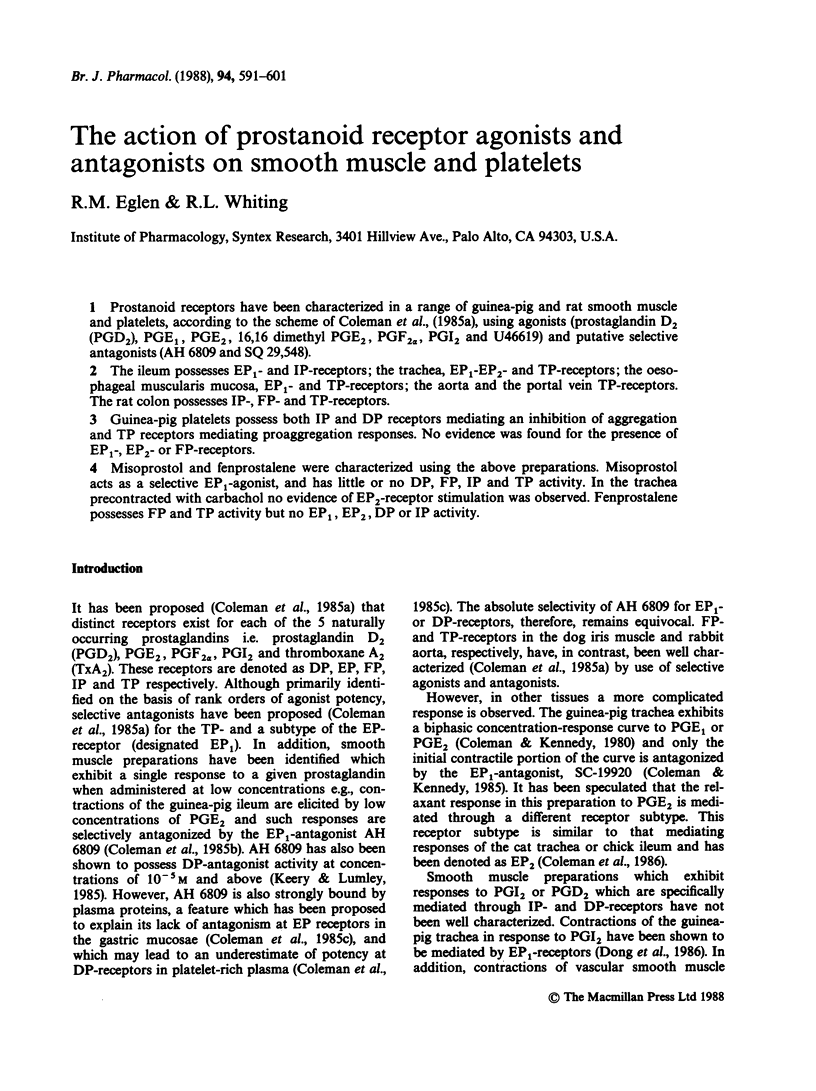
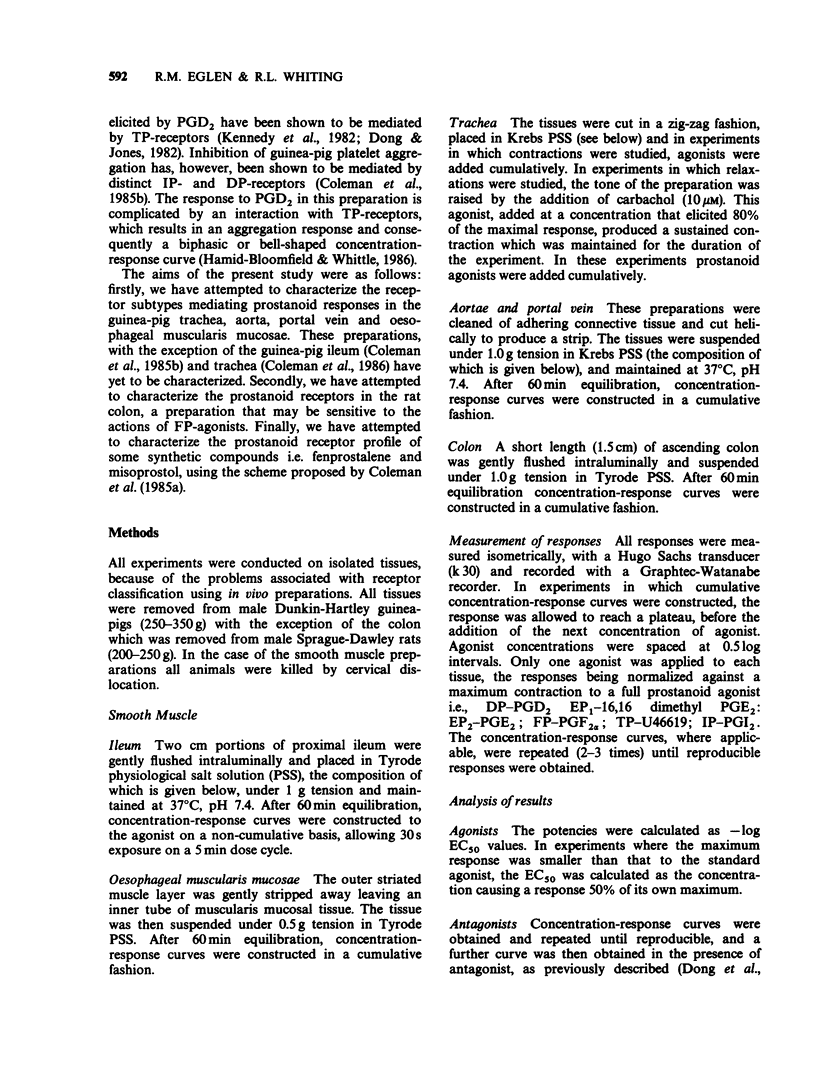
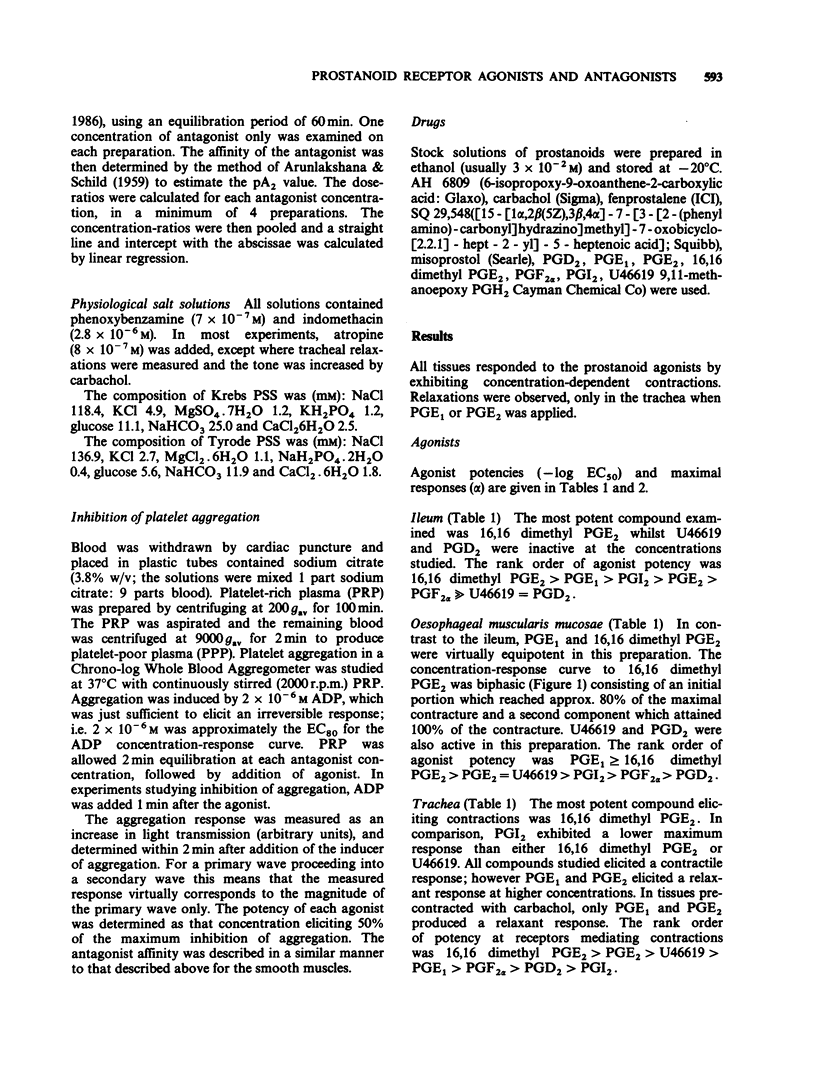
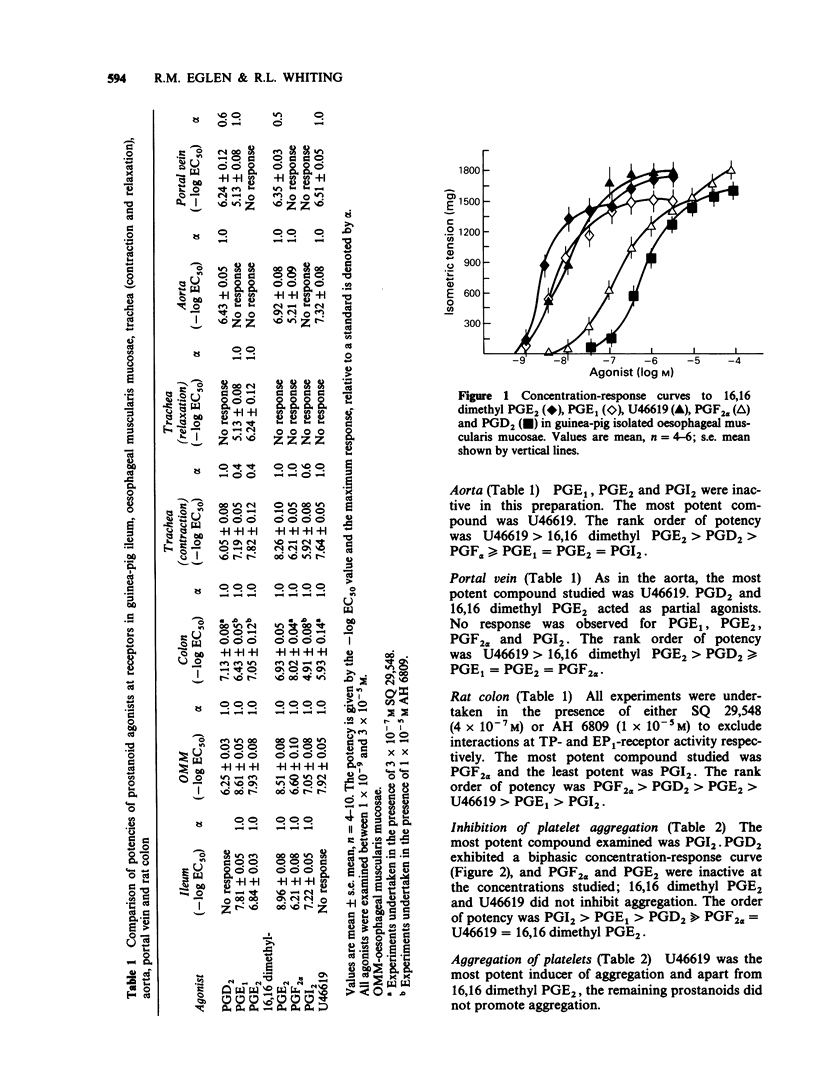
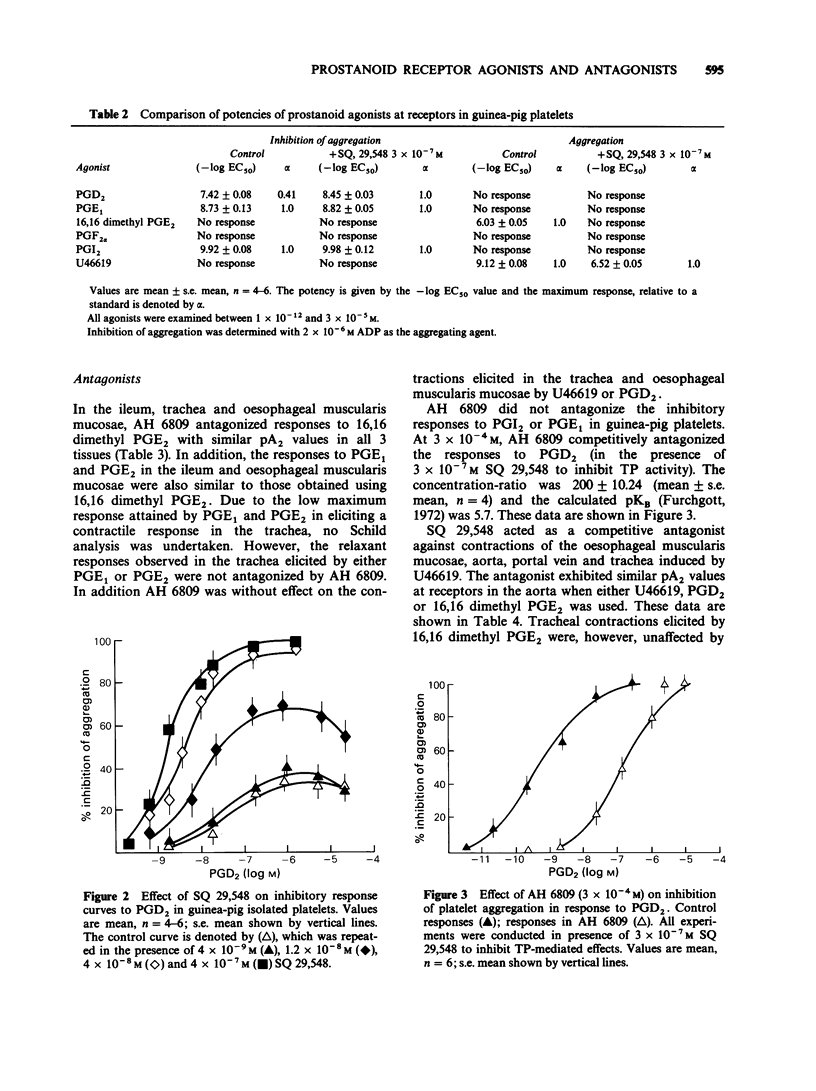
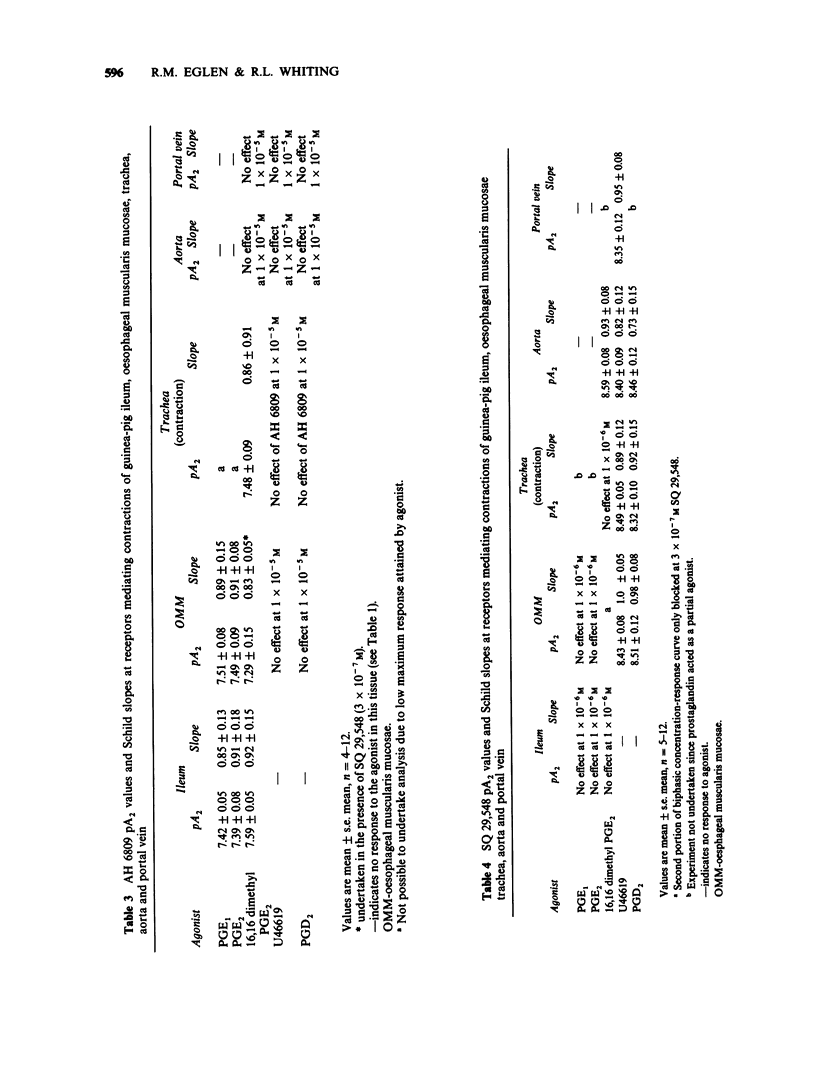
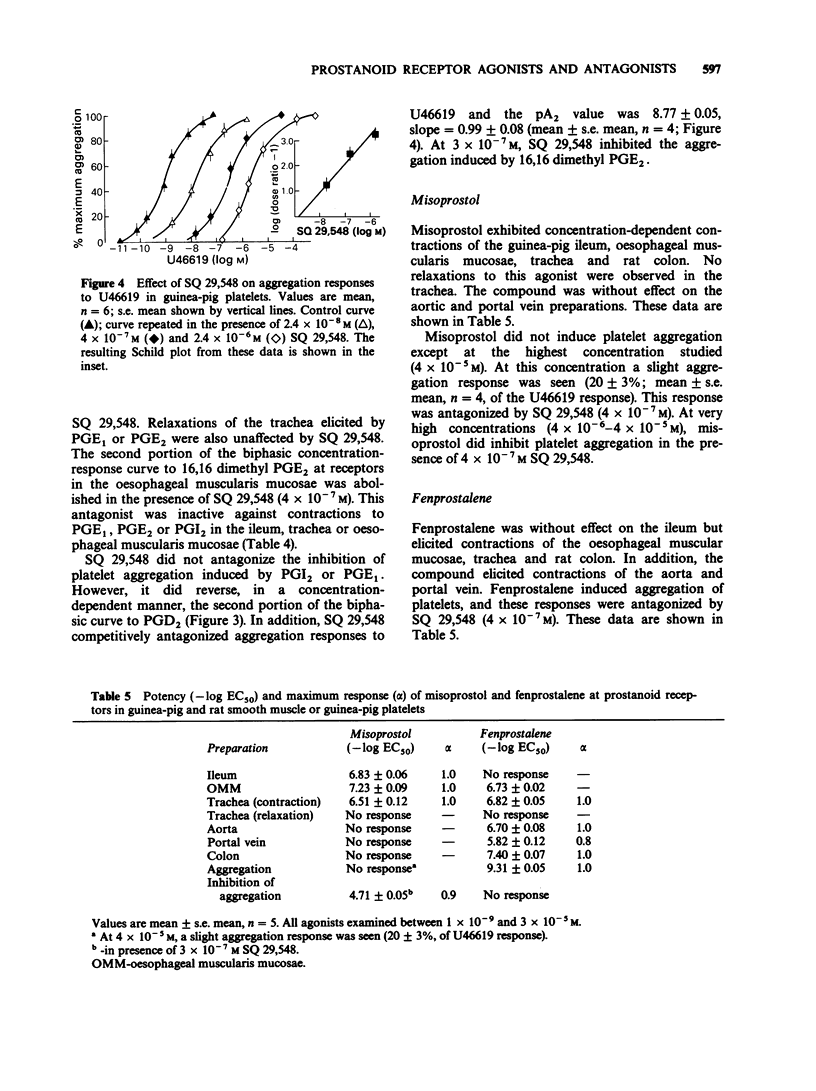

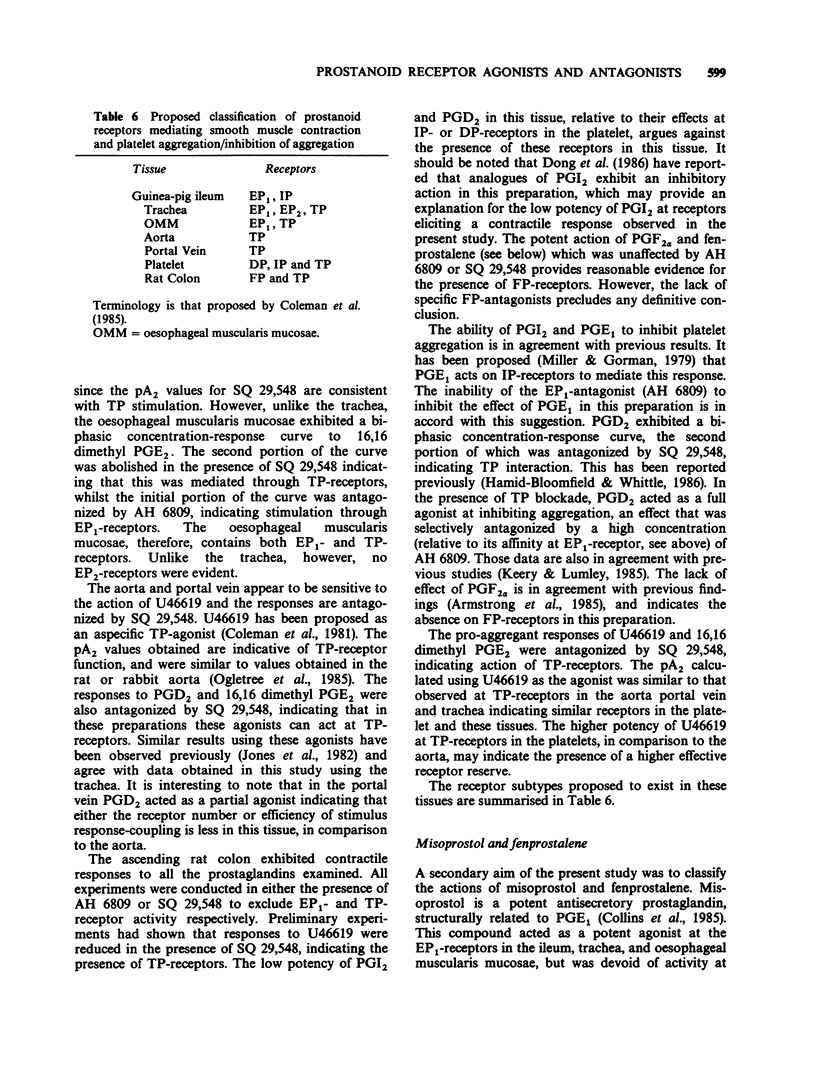
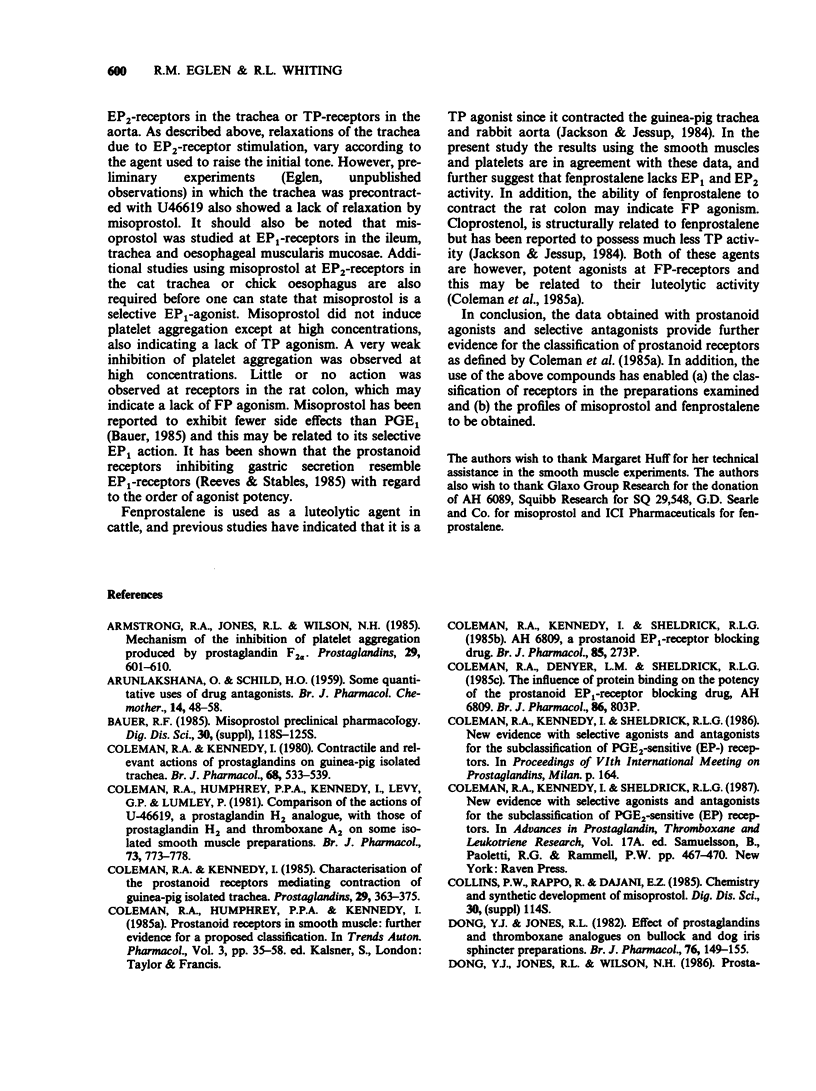
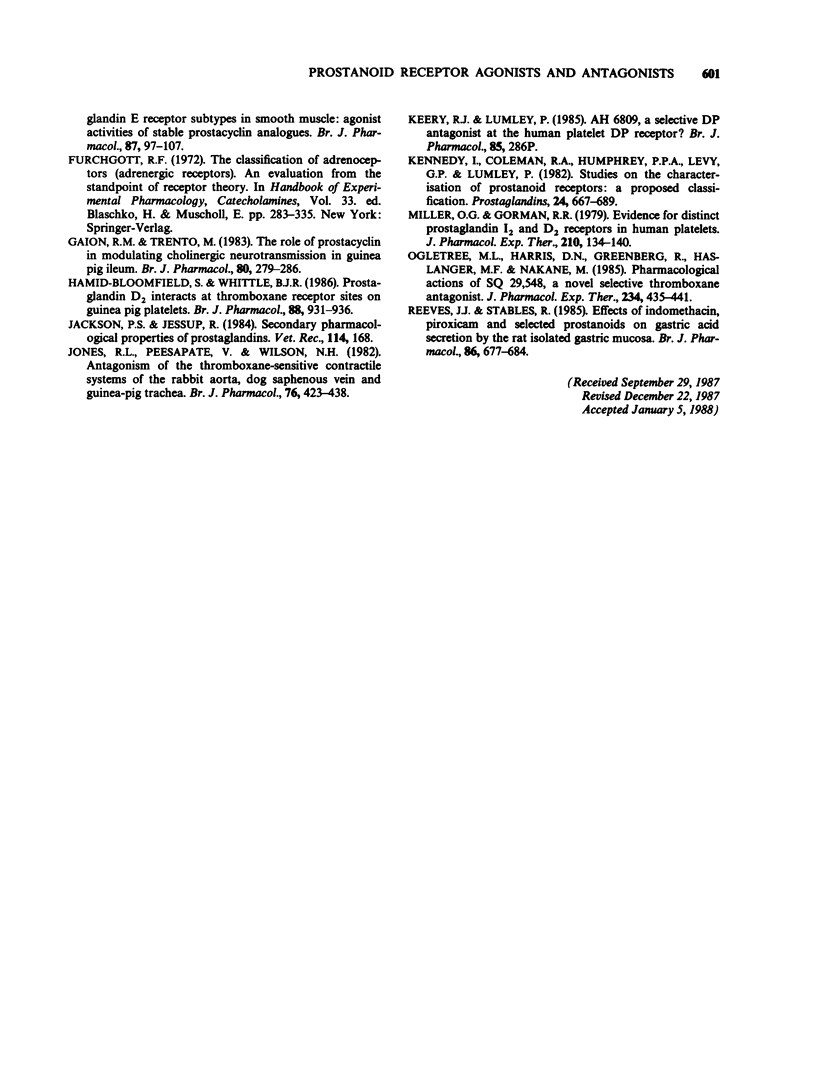
Selected References
These references are in PubMed. This may not be the complete list of references from this article.
- ARUNLAKSHANA O., SCHILD H. O. Some quantitative uses of drug antagonists. Br J Pharmacol Chemother. 1959 Mar;14(1):48–58. doi: 10.1111/j.1476-5381.1959.tb00928.x. [DOI] [PMC free article] [PubMed] [Google Scholar]
- Armstrong R. A., Jones R. L., Wilson N. H. Mechanism of the inhibition of platelet aggregation produced by prostaglandin F2 alpha. Prostaglandins. 1985 Apr;29(4):601–610. doi: 10.1016/0090-6980(85)90083-8. [DOI] [PubMed] [Google Scholar]
- Bauer R. F. Misoprostol preclinical pharmacology. Dig Dis Sci. 1985 Nov;30(11 Suppl):118S–125S. doi: 10.1007/BF01309396. [DOI] [PubMed] [Google Scholar]
- Coleman R. A., Humphrey P. P., Kennedy I., Levy G. P., Lumley P. Comparison of the actions of U-46619, a prostaglandin H2-analogue, with those of prostaglandin H2 and thromboxane A2 on some isolated smooth muscle preparations. Br J Pharmacol. 1981 Jul;73(3):773–778. doi: 10.1111/j.1476-5381.1981.tb16814.x. [DOI] [PMC free article] [PubMed] [Google Scholar]
- Coleman R. A., Kennedy I. Characterisation of the prostanoid receptors mediating contraction of guinea-pig isolated trachea. Prostaglandins. 1985 Mar;29(3):363–375. doi: 10.1016/0090-6980(85)90096-6. [DOI] [PubMed] [Google Scholar]
- Coleman R. A., Kennedy I. Contractile and relaxant actions of prostaglandins on guinea-pig isolated trachea. Br J Pharmacol. 1980 Mar;68(3):533–539. doi: 10.1111/j.1476-5381.1980.tb14569.x. [DOI] [PMC free article] [PubMed] [Google Scholar]
- Coleman R. A., Kennedy I., Sheldrick R. L. New evidence with selective agonists and antagonists for the subclassification of PGE2-sensitive (EP) receptors. Adv Prostaglandin Thromboxane Leukot Res. 1987;17A:467–470. [PubMed] [Google Scholar]
- Collins P. W., Pappo R., Dajani E. Z. Chemistry and synthetic development of misoprostol. Dig Dis Sci. 1985 Nov;30(11 Suppl):114S–117S. doi: 10.1007/BF01309395. [DOI] [PubMed] [Google Scholar]
- Dong Y. J., Jones R. L. Effects of prostaglandins and thromboxane analogues on bullock and dog iris sphincter preparations. Br J Pharmacol. 1982 May;76(1):149–155. doi: 10.1111/j.1476-5381.1982.tb09200.x. [DOI] [PMC free article] [PubMed] [Google Scholar]
- Gaion R. M., Trento M. The role of prostacyclin in modulating cholinergic neurotransmission in guinea-pig ileum. Br J Pharmacol. 1983 Oct;80(2):279–286. doi: 10.1111/j.1476-5381.1983.tb10031.x. [DOI] [PMC free article] [PubMed] [Google Scholar]
- Hamid-Bloomfield S., Whittle B. J. Prostaglandin D2 interacts at thromboxane receptor-sites on guinea-pig platelets. Br J Pharmacol. 1986 Aug;88(4):931–936. doi: 10.1111/j.1476-5381.1986.tb16268.x. [DOI] [PMC free article] [PubMed] [Google Scholar]
- Jackson P. S., Jessup R. Secondary pharmacological properties of prostaglandins. Vet Rec. 1984 Feb 18;114(7):168–168. doi: 10.1136/vr.114.7.168. [DOI] [PubMed] [Google Scholar]
- Jones R. L., Peesapati V., Wilson N. H. Antagonism of the thromboxane-sensitive contractile systems of the rabbit aorta, dog saphenous vein and guinea-pig trachea. Br J Pharmacol. 1982 Jul;76(3):423–438. doi: 10.1111/j.1476-5381.1982.tb09236.x. [DOI] [PMC free article] [PubMed] [Google Scholar]
- Kennedy I., Coleman R. A., Humphrey P. P., Levy G. P., Lumley P. Studies on the characterisation of prostanoid receptors: a proposed classification. Prostaglandins. 1982 Nov;24(5):667–689. doi: 10.1016/0090-6980(82)90036-3. [DOI] [PubMed] [Google Scholar]
- Miller O. V., Gorman R. R. Evidence for distinct prostaglandin I2 and D2 receptors in human platelets. J Pharmacol Exp Ther. 1979 Jul;210(1):134–140. [PubMed] [Google Scholar]
- Ogletree M. L., Harris D. N., Greenberg R., Haslanger M. F., Nakane M. Pharmacological actions of SQ 29,548, a novel selective thromboxane antagonist. J Pharmacol Exp Ther. 1985 Aug;234(2):435–441. [PubMed] [Google Scholar]
- Reeves J. J., Stables R. Effects of indomethacin, piroxicam and selected prostanoids on gastric acid secretion by the rat isolated gastric mucosa. Br J Pharmacol. 1985 Nov;86(3):677–684. doi: 10.1111/j.1476-5381.1985.tb08945.x. [DOI] [PMC free article] [PubMed] [Google Scholar]


